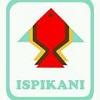ANALISIS MUSIM PENANGKAPAN IKAN TERI (Stolephorus sp.) DI TELUK DODINGA, KABUPATEN HALMAHERA BARAT
DOI:
https://doi.org/10.35800/jpkt.7.1.2011.6Abstract
Fisheries should be a sustainable economic activity in order to maintain its services in the future. Sustainable marine fisheries resources exploitation requires a utilization rate lower than the resources availability. Therefore, the exploitation rate should not achieve the recovery ability of the resources in any particular period. In fishing activities, for instance, there is a guideline not to catch fish over the Total Allowable Catch (TAC), 80% of the MSY value.
The exploitation rate of the anchovy (Stolephorus sp.) in Dodinga Bay was still low. It could result from small-scaled traditional fishermen and low fishing distance from the shore. Their income was also low due to high operational cost and fluctuation in fish price. To improve the fishermen prosperity, it is necessary to raise the fishing productivity and the efficiency of production input utilization on the boat lift net. This study focused on understanding the anchovy fishing season of the boat lift net in Dodinga Bay to analyze the yearly fishing seasons for the last five years.
Results concluded that the fishing season of the anchovy (Stolephorus sp.) in Dodinga Bay could be separated into two phases, March to June and October to November, but the former was more extensive and lager in scale than the later.










